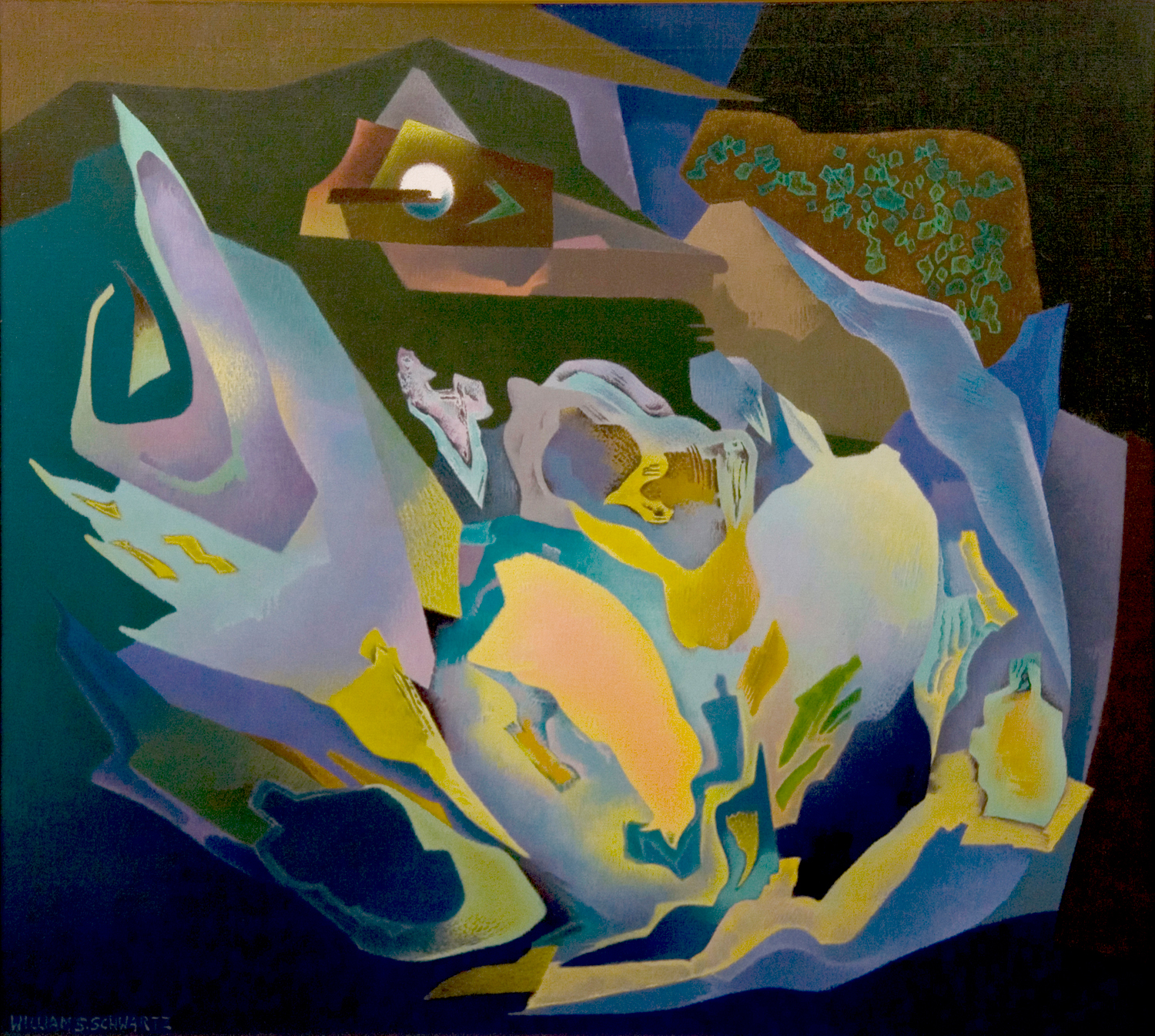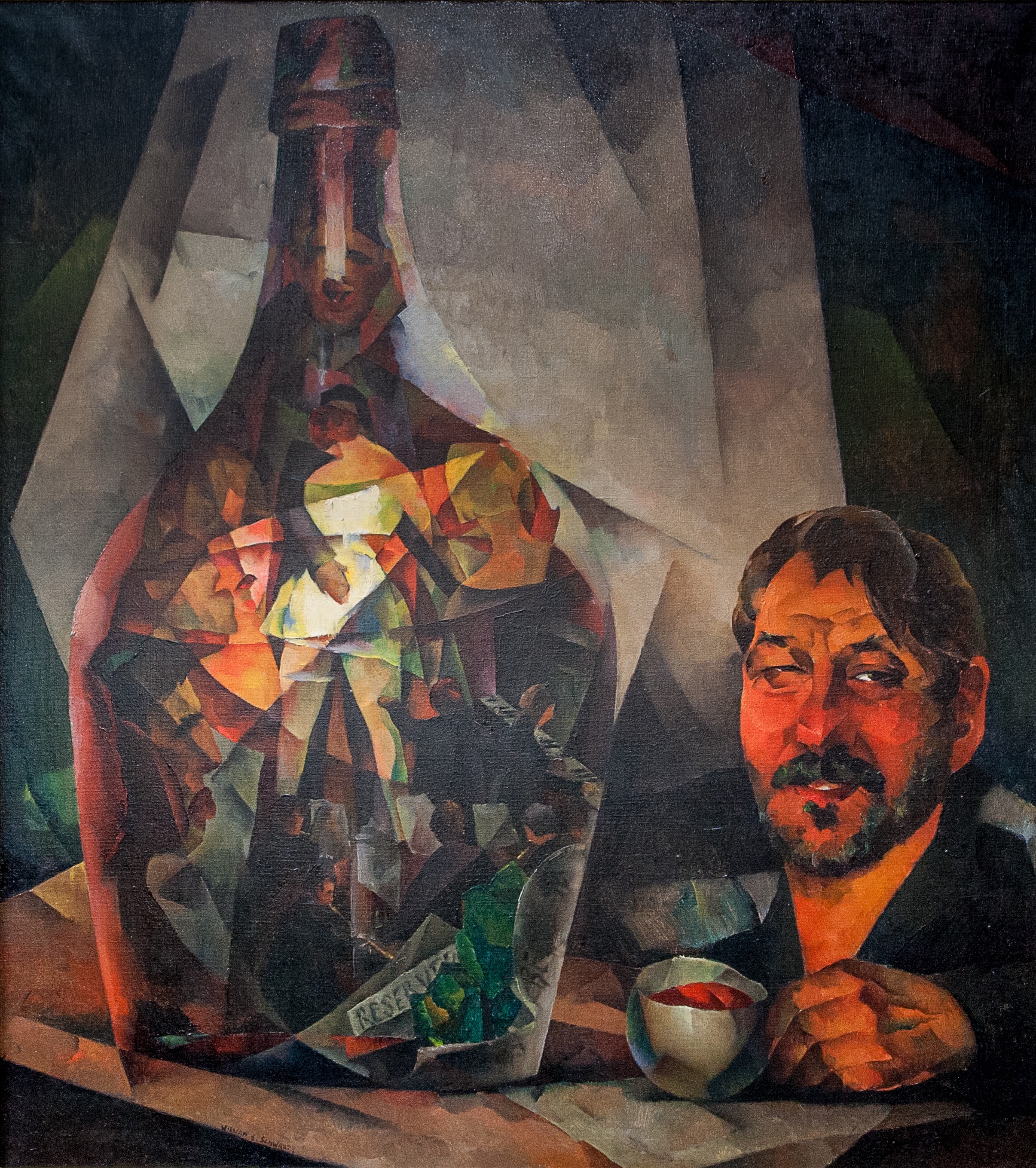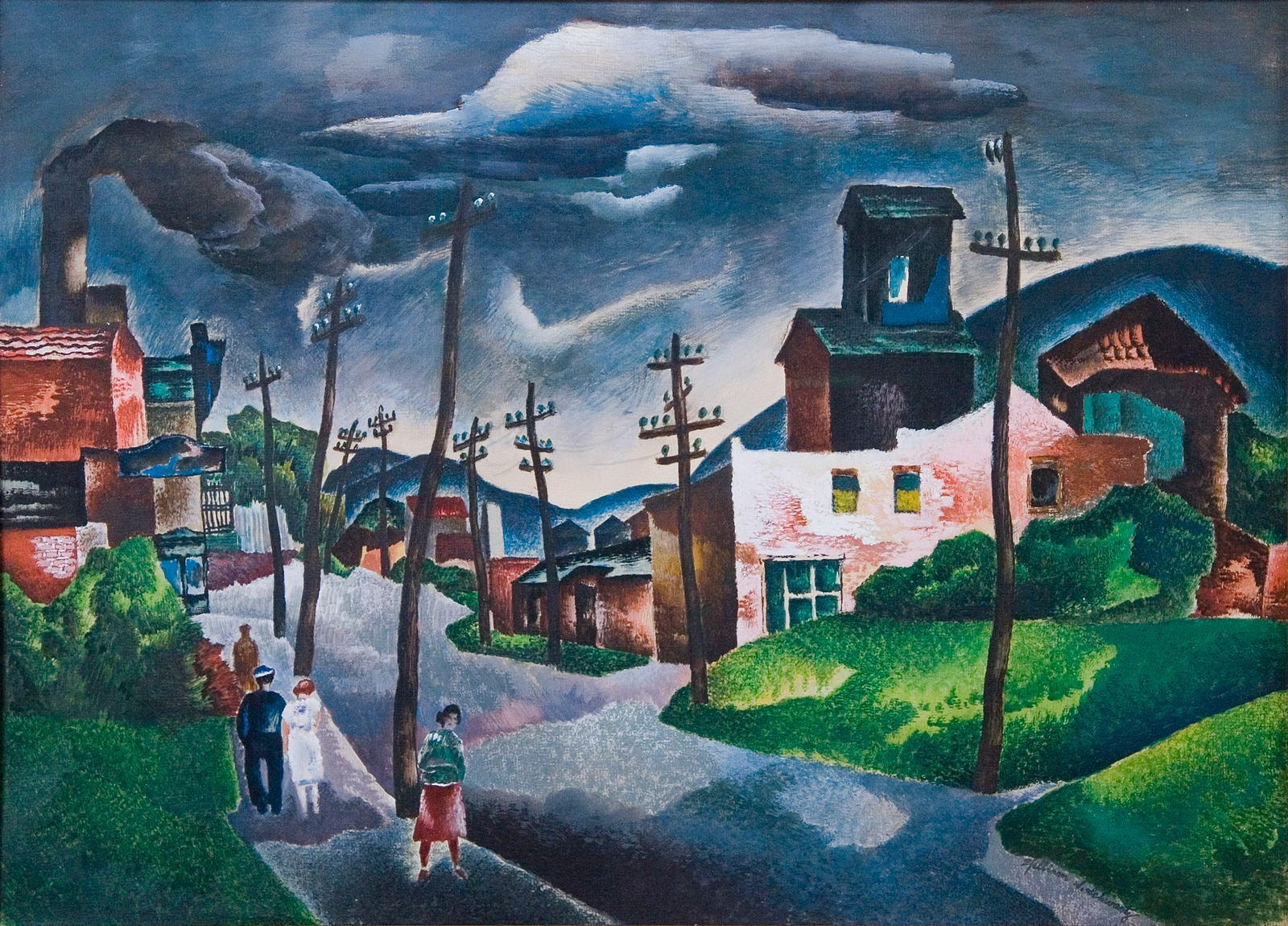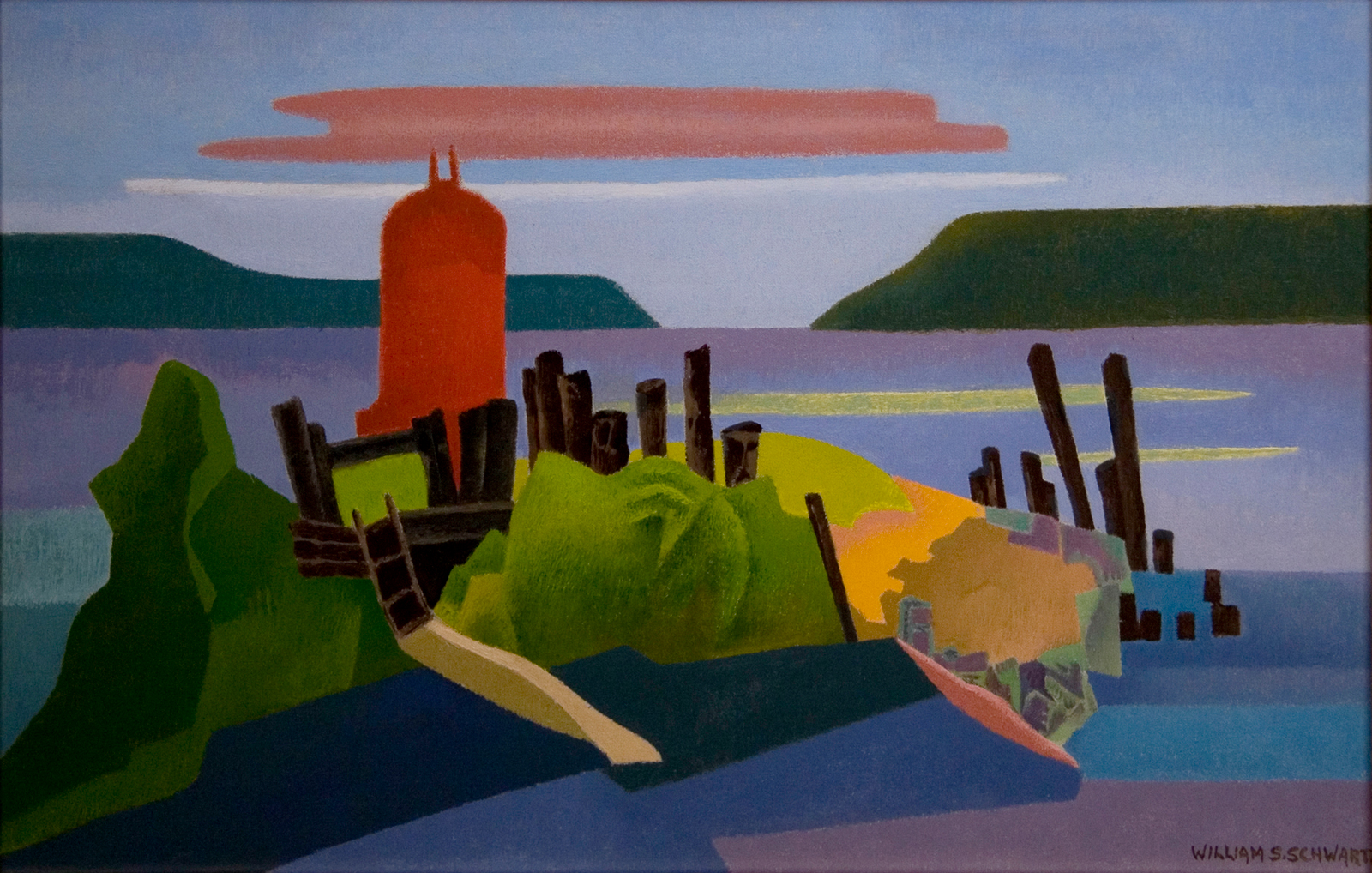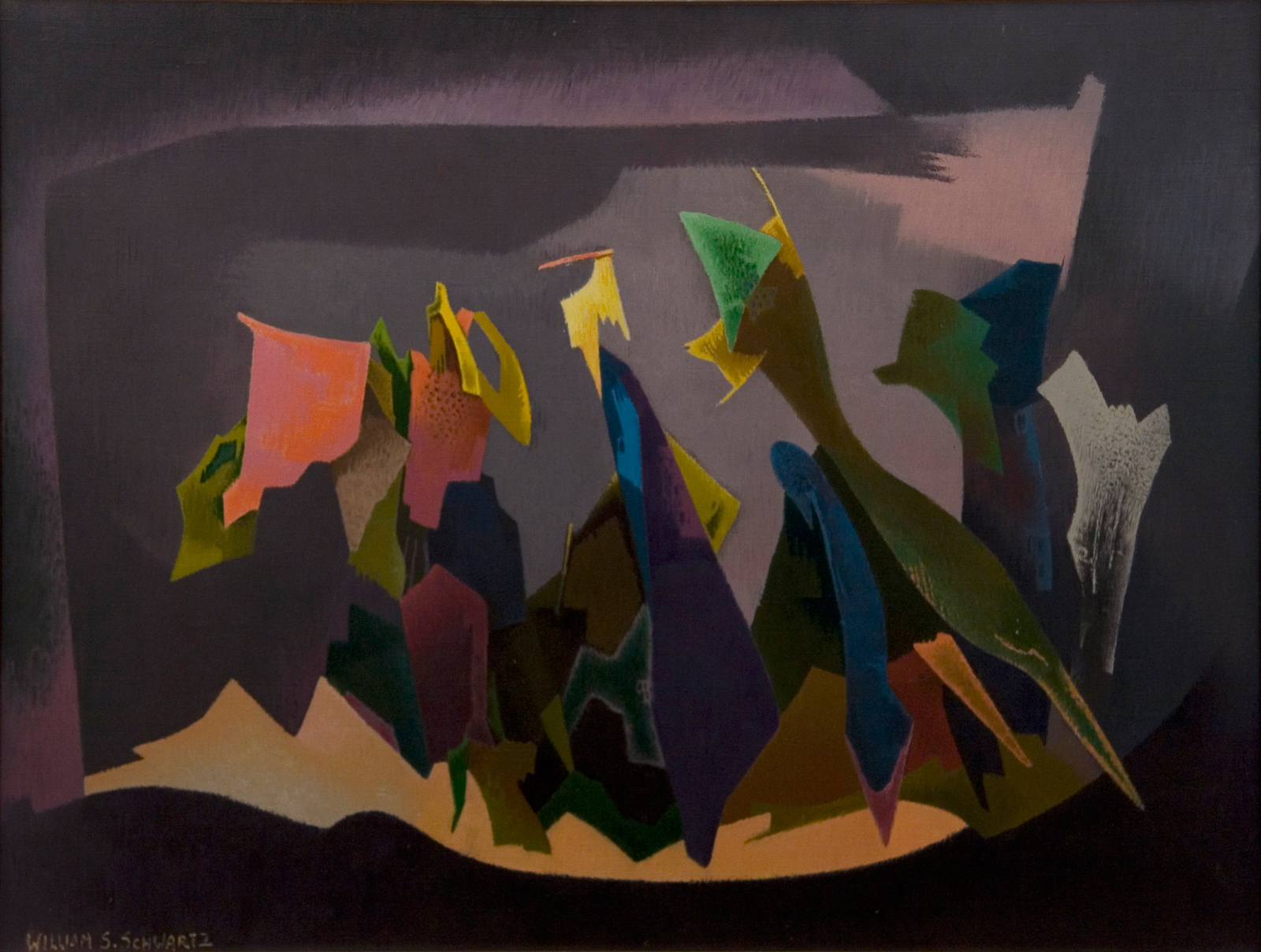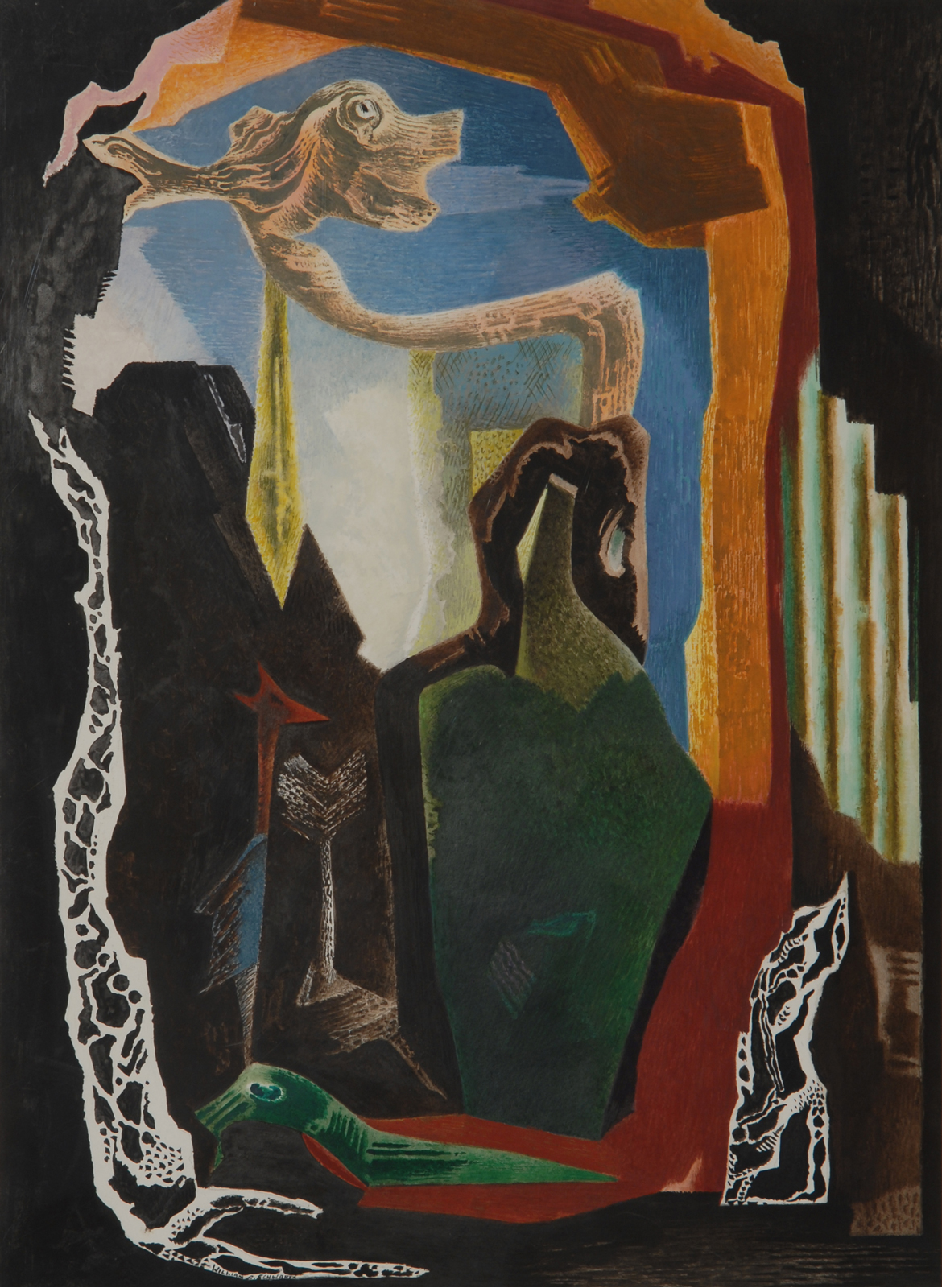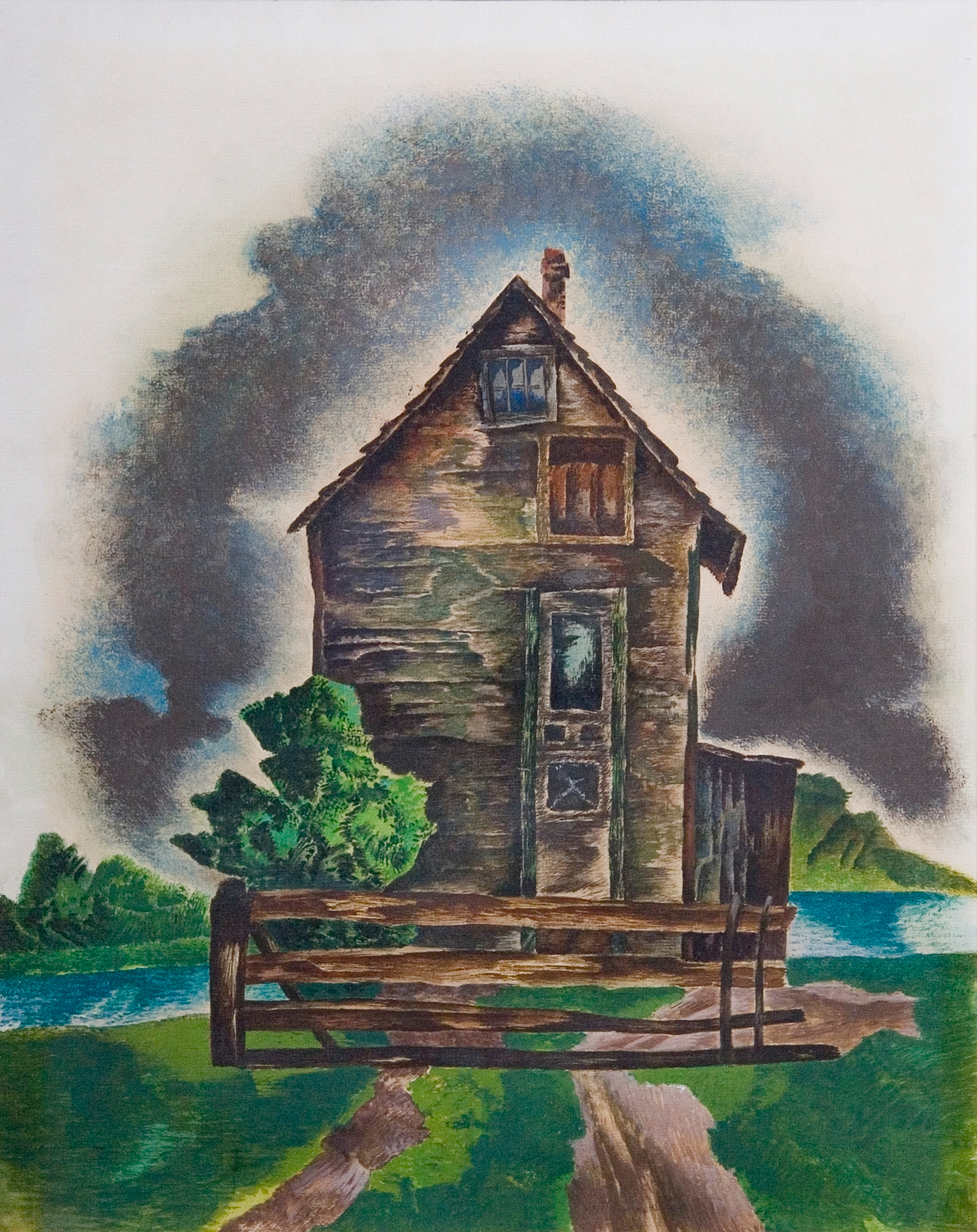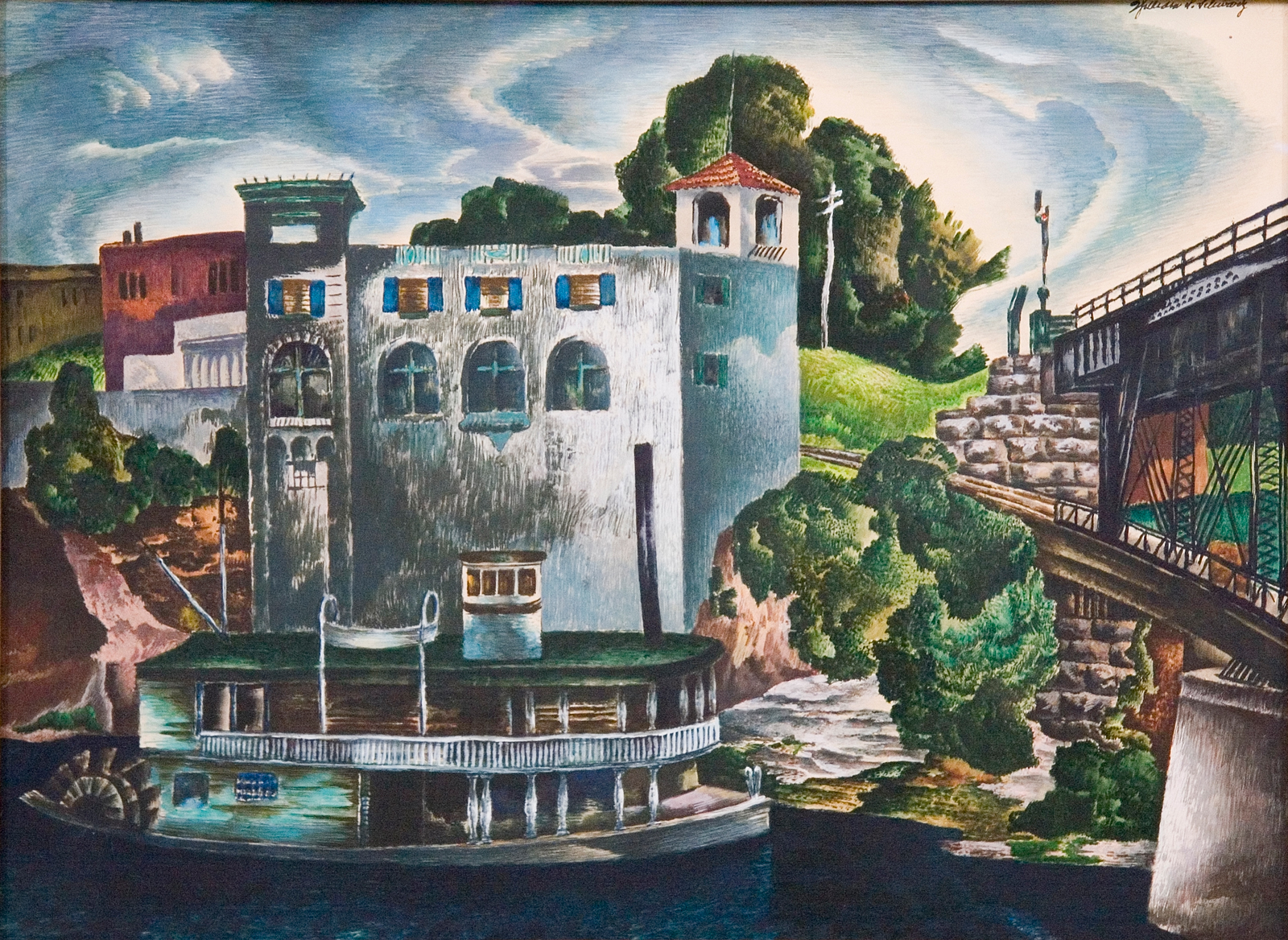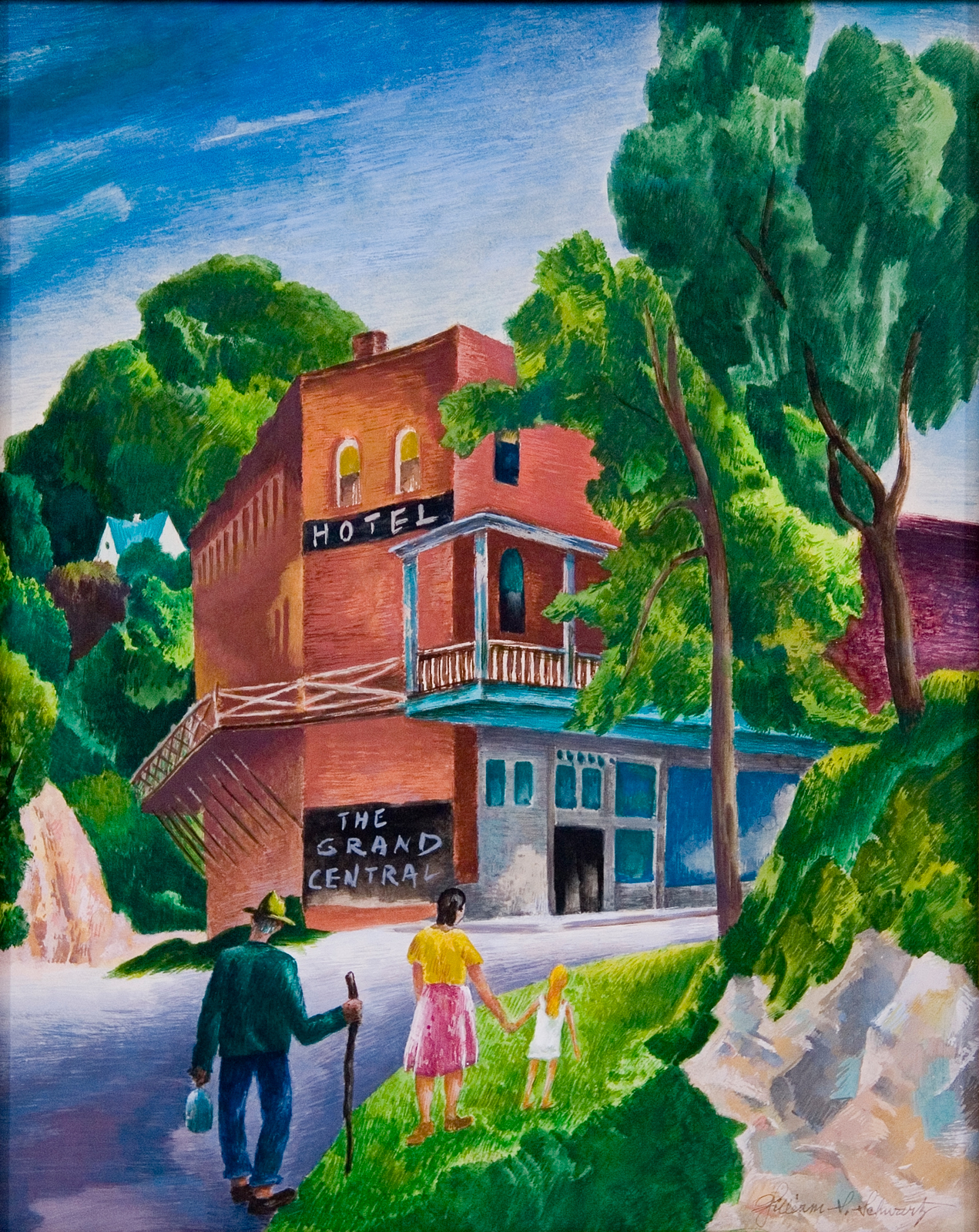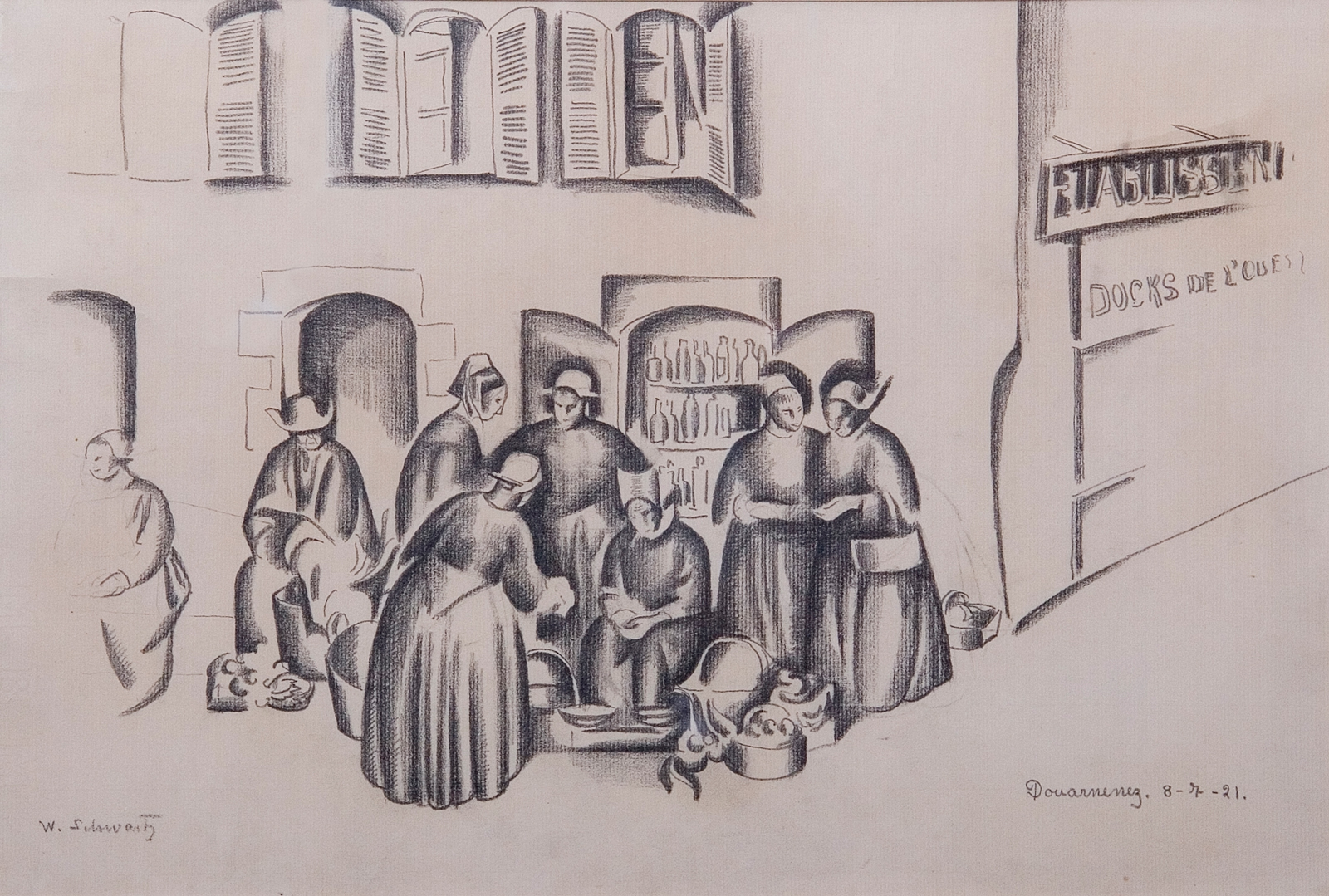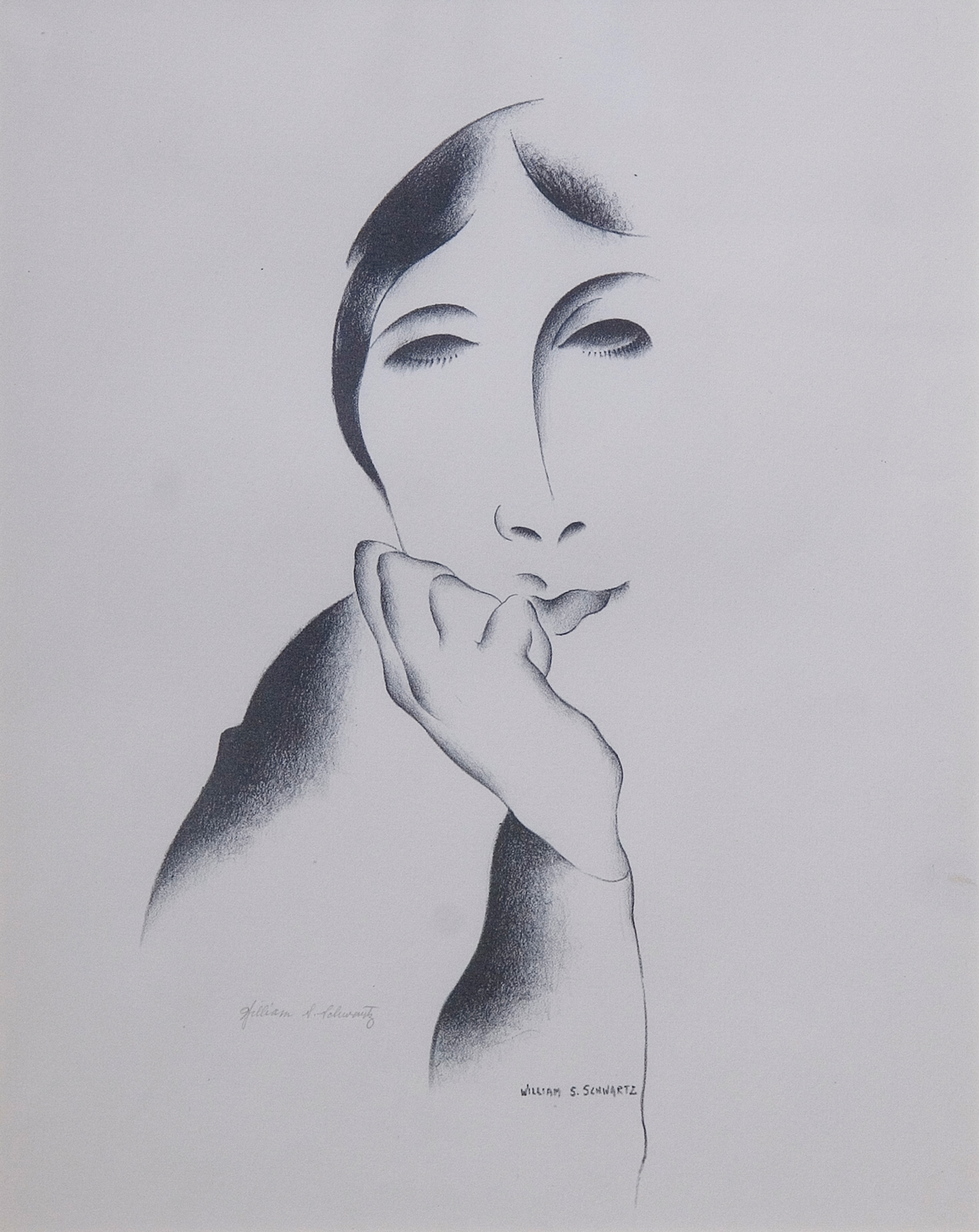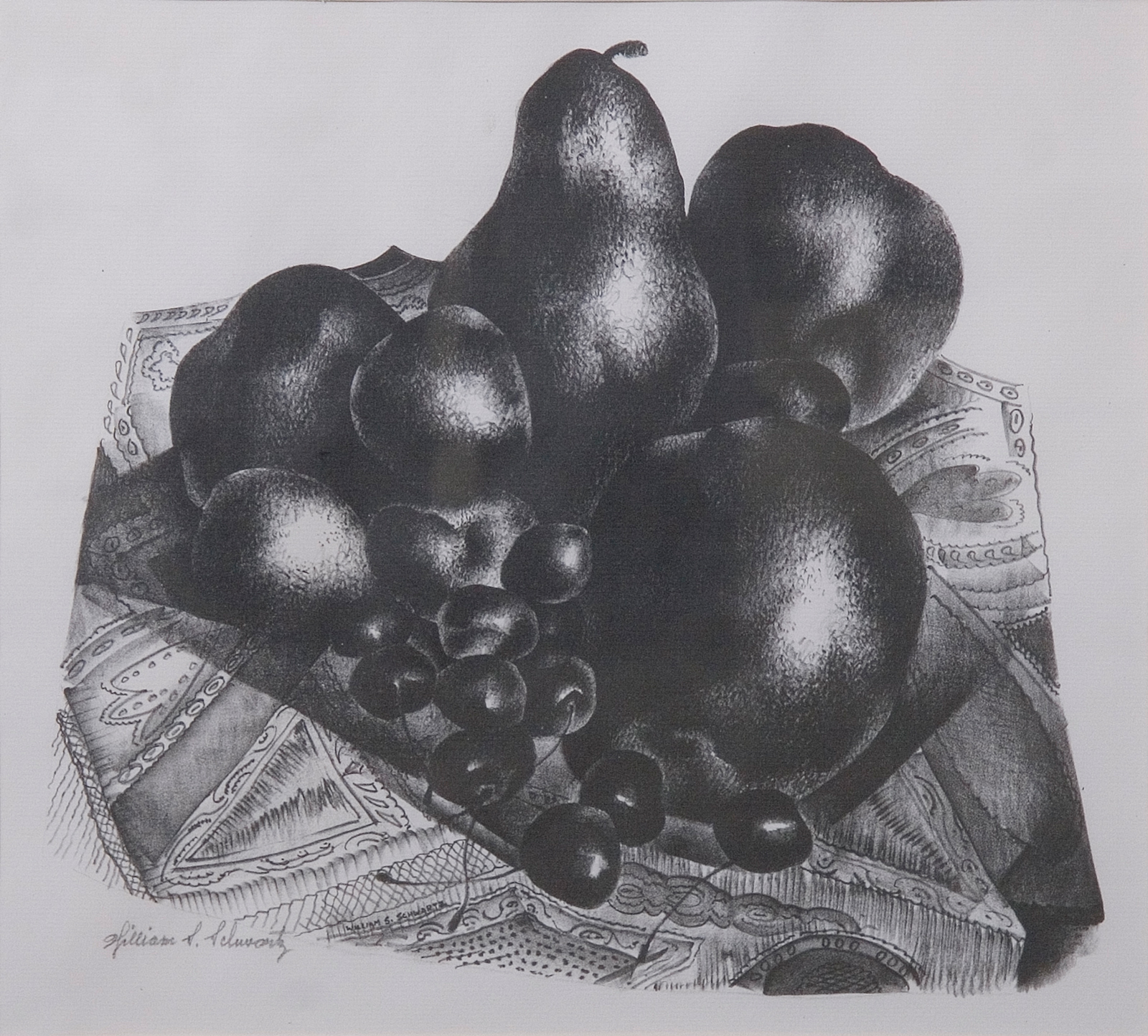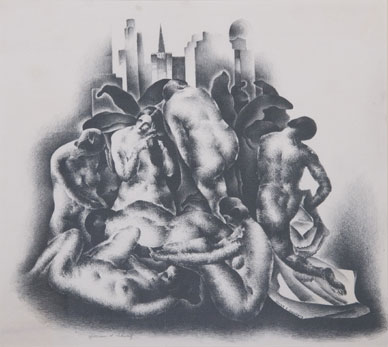William S. Schwartz
William S. Schwartz (1896-1977) was a genre-bending painter, lithographer, sculptor, and opera singer perhaps best known for his Symphonic Forms, a series of near-abstract paintings that evoke the experience of listening to music and which earned him the moniker “a musician in color.”
Born in the city of Smorgon in modern-day Belarus, Schwartz came to the United States around 1912, fleeing the violence and oppression under the Pale of Settlement. He settled in Chicago where he studied at the School of the Art Institute of Chicago with Karl A. Buehr. For a short period post-graduation Schwartz performed with the Bohemian Opera Company in Chicago — he was a trained tenor — but soon turned exclusively to the visual arts.
Schwartz was widely celebrated for his use of saturated, luminous colors, partly inspired by El Greco, and he employed them particularly in his landscapes and abstractions. A stylistic chameleon who drew on modes like Fauvism, Cubism, Futurism, and Post-Impressionism to create everything from futuristic cityscapes to surreal self-portraits, his life is perhaps best summed up by his own reflection on his career: “I have painted in faith and freedom — faith that somehow what I have done will reflect the best that is in me — freedom to choose my own themes in my own way.”
To learn more about Schwartz’s far-ranging career, check out William S. Schwartz: Color and Coloratura in the Madron Press store.
